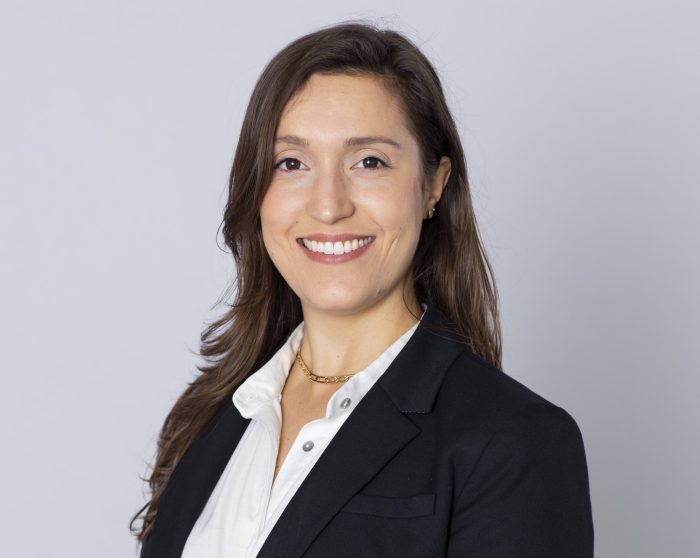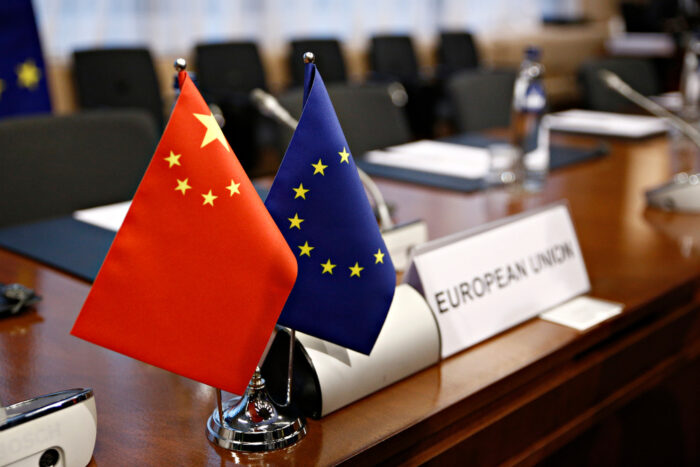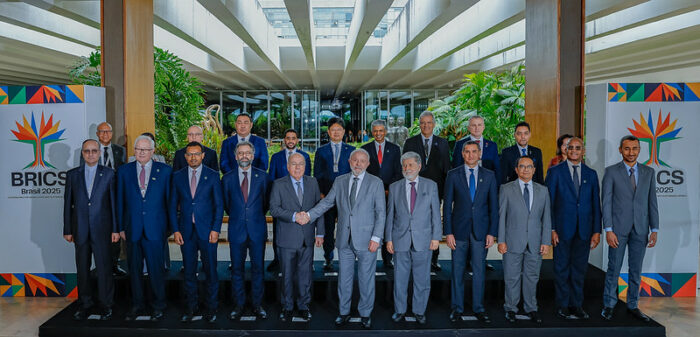The Progressive Post
Geopoliticising European development policy? Assessing the new EU external action budget framework

When the former German Defense Minister, Ursula von der Leyen, became President of the European Commission in December 2019, she pledged to transform the EU into a more relevant geopolitical actor. While Europe’s identity had for a long time been rooted in the idea of the Union exerting normative power, that is, influencing the global order by diffusing its norms, ideas and values, Von der Leyen made clear at the start of her mandate that, although such soft power tools still mattered, “Europe must also learn the language of [hard] power”.
The new European Commission President was able to build on her predecessors’ attempts to advance this gradual transformation of EU politics, away from a purely Kantian to a more Hobbesian understanding of international politics.
Already in 2012, then Commission President José Manuel Barroso argued in his State of the Union address that “sharing sovereignty in Europe means being more sovereign in a global world”. Not long before Barroso’s speech, the entering into force of the Lisbon Treaty in 2009 had laid the institutional foundation for a more assertive and visible EU nascent foreign policy. From the outset, this new ambition also posed existential questions for the EU’s development policy, which EU foreign policymakers were eager to address for the first time in the 2016 Global Strategy for the European Union’s Foreign and Security Policy. The strategy argued that the EU development cooperation “needs to become more flexible and aligned with our [the EU’s] strategic priorities”. This was no mean feat, in view of the considerable fragmentation of the policy domain: for reasons of historical path dependencies and bureaucratic politics, the EU, in fact, was pursuing a multitude of development policies with European geographic concepts that included the ‘neighbourhood’ and ‘Sub-Saharan Africa’. More fundamentally, however, the strategy and the new-found predilection for a more, in Robert Kagan’s words, “Martian foreign policy” approach risked undermining the very essence of EU development cooperation, that is, the eradication of poverty. In other words, the persisting tension enshrined in article 208 of the Treaty on the Functioning of the European Union, which derives from a delicate balancing act between interests and normative goals, was now brought to the fore.
This process coincides with almost unprecedented turmoil in the post-WWII world order. For the EU’s new strategic ambitions and their realisation, this comes close to learning to swim in the open waters.
A new instrument for a new foreign policy
In 2020, the ongoing EU budget negotiations and related legislative proposals to govern and guide the spending of the EU’s Multiannual Financial Framework (MFF) for the period 2021-27, offered an opportunity for the EU to put words into action. To overcome the institutional and financial fragmentation of EU development policy instruments and thus strengthen Europe’s visibility and standing in the world, the Commission proposed to merge the numerous frameworks (‘External Financing Instruments’ in EU-speak) into a single framework for financing the EU’s neighbourhood, development and foreign policies. These included an inter-governmental fund for cooperating with African, Caribbean and Pacific states (the European Development Fund), separate geographic and thematic frameworks covering different topics and regions, but also various forms of financing: grant-based cooperation, concessional loans, blended finance and guarantees, the latter two to promote external public and private investment.
Following cumbersome negotiations in the midst of a global pandemic, EU heads of state and government reached a political agreement on the nature and the size of the forthcoming MFF in July 2020. With the successful conclusion of the budget negotiations, the EU also enacted its new instrument for external action. In June 2021, three years after it had originally been proposed, the new framework was adopted and given the cumbersome name of ‘Neighbourhood, Development and International Cooperation Instrument – Global Europe (NDICI-Global Europe)’, equipping the EU with a refreshed and reformed ‘toolbox’ for its external action. Its dual name and the various ways it was referred to in the press releases by the Council, Commission and European Parliament seem to reflect the various perspectives and preferences that the negotiating parties had pursued in relation to the new framework and its considerable budget of €79.5 billion for the period of 2021-27.
Objectives and shape of NDICI-Global Europe
Beyond the general objective of increasing the EU’s visibility abroad, improving intra-European coordination, and strengthening the effectiveness of European development allocations, the new instrument pursues several other goals that are more specific. The legal text of the instrument specifies that 93 per cent of its budget shall fulfil the criteria for Official Development Assistance (ODA) as established by the OECD’s Development Assistance Committee. The OECD defines ODA as funding that advances the economic development and welfare of developing countries and is concessional in character.
NDICI-Global Europe funding is allocated through geographic programmes (covering the Neighbourhood, Sub-Saharan Africa, Asia and the Pacific, and the Americas and the Caribbean), thematic programmes (encompassing human rights and democracy civil-society organisations, peace stability and conflict prevention; global challenges) and a rapid response mechanism (designed to address crisis and conflict prevention).
The integration of hitherto separate instruments and funds under one legal roof, in particular, the inter-governmental European Development Fund, required institutional changes in the relationship between the member states and the European Parliament. During the negotiations of the instrument, it was agreed that the European Parliament with its Development and Foreign Affairs Committees would have a half-yearly geopolitical dialogue with relevant European Commissioners to both scrutinise and inform cooperation decisions and choices. The introduction of this new dialogue format offers the potential to increase the Parliament’s democratic oversight over EU external action. Still, since the meetings in this format are held behind closed doors, this cannot be ascertained.
The framework had to navigate various trade-offs that were already present in the June 2018 proposal; or, in non-economist language, it faced the challenge of squaring various circles from the design stage onwards. One such challenge concerns the ambition to become more flexible and responsive, while at the same time incorporating various pre-set input targets and earmarked ‘sub-budgets’ to make sure that guaranteed levels of funding are available for selected regions and topics. Another concerns the inclusion of a so-called ’emerging challenges and priorities cushion’, with the preamble to the text specifying that the Commission should inform the European Parliament before mobilising these funds, whilst taking its observations into account.
In line with the instrument’s pillar structure, geographic (country and regional) and thematic strategies, which should identify the spending priorities, were developed in December 2021. They indicate the funding priorities for the period 2021-24, the mid-point in the budget cycle when further changes may be introduced. While the strategies concern the use of the EU’s own budgetary resources, the preparation was accompanied by detailed discussions with representatives of EU member states, the European Investment Bank and the European Bank for Reconstruction and Development on how their respective plans and priorities could be bundled as ‘Team Europe Initiatives’ to strengthen both their collective visibility and effectiveness.
The ink on the policy documents was not yet dry, when Commission President Von der Leyen presented Global Gateway, an EU initiative to increase broadly defined infrastructure investments around the world. Global Gateway constitutes a not-all-that-implicit response to the Chinese Belt and Road Initiative, with a strong focus on the developing world and Africa in particular. Through a Team Europe approach, an impressive €300 billion shall be mobilised, largely by leveraging private capital.
The Commission’s plans to materialise Global Gateway by relying on Team Europe Initiatives can be read in different ways. For one, the subordination of NDICI-Global Europe and Team Europe to a new grand strategy can signify the acknowledgement that neither the EU budget for external action nor the coordination efforts under Team Europe are sufficient to improve the EU’s visibility and standing in the world.
Furthermore, strategic and interest-driven divisions among member states remain significant and have been overcome neither with the establishment of the new financial instrument nor with the promotion of the Team Europe approach. In effect, the Team Europe approach, which aimed to leverage the EU’s visibility in the world from its global response to the pandemic, started to generate a perception among certain member states that they were losing their own (bilateral) visibility and recognition with partner countries.
Notwithstanding the initial motivation of rationalising and defragmenting the EU’s institutional setup, the EU’s transition from a demand-driven to an interest-driven international cooperation agenda has itself been a source of new and emerging initiatives that to some extent compromises the gains that the merging of the existing instruments had enabled. J.-B. Alphonse Karr’s 1849 epigram, plus ca change…, captures this situation rather well.
A world in turmoil putting the new instrument to the test
A budget of €79.5 billion for seven years transcends the individual annual foreign aid commitments of all member states with the sole exception of Germany ($32.2 billion, OECD preliminary data). Yet the many objectives, which have to be furthered under this budget framework, are only to a degree offset by its flexible reserves and other provisions to respond to unforeseen circumstances. One of the larger strategic plans for bilateral cooperation that was adopted in December 2021 was prepared for cooperation with Ukraine and set out cooperation priorities for the period 2021-24 with a total budget of €640 million. Russia’s invasion of Ukraine on 24 February, a week after the EU’s summit with the African Union, invalidated this strategy that had been prepared over several months. The EU was however swift in its response and mobilised around €4.1 billion in the form of macro-financial assistance, budget support, emergency assistance, crisis response and humanitarian aid to support Ukraine. Under the European Peace Facility, the EU has also provided military assistance to the invaded country amounting to €1.5 billion.
The invasion of Ukraine however also indicated that the careful balance between the development, foreign and neighbourhood policy objectives that was struck in June 2021 by the various EU institutions in the form of the NDICI-Global Europe Regulation now needs to face an even harsher geopolitical reality than the co-legislators may have anticipated. Implicit in the Commission’s initial plans was that the EU could develop into a more geopolitical actor, but on its own initiative and strategy. Two years after the start of the pandemic, unfortunately the EU again finds itself challenged to gain control of a world in turmoil. Notably, the Ukraine war itself is creating consequences for global trade, energy and food security that threaten the EU’s role as the world’s largest economic bloc as well as may require a refocus of its cooperation priorities and strategic alliances. There are also associated risks that direct financial support to Ukraine, ranging from military to humanitarian, and thus may displace funds originally intended for other regions – especially as the member states’ willingness and fiscal ability to provide additional funds to the EU budget cannot be assumed in today’s challenging economic context.
The same programmatic challenge is faced by the EU’s Global Gateway initiative, which implicitly sought to position the EU towards competing with other international players, notably China, in the field of infrastructure investment, yet was premised on a stable global economy. The question here is what role the Global Gateway may have in terms of ramping up investment in a situation where that stability is no longer a given, protectionism and national interests are increasingly on the rise, and where connections have to be restored as opposed to deepened, and often with non-like-minded countries. Linked to this is the extent to which the use of ODA to leverage such investments comes with opportunity costs in terms of the alternative uses of the EU’s resources to respond to the considerable human development setbacks facing the same countries. This leads to a situation in which allocations are increasingly determined by strategic goals, yet effective delivery is far from certain.
At the mid-point of the period for pursuing the 2030 Agenda and its Sustainable Development Goals, this shows that although the EU institutions may have agreed on a single budgetary framework for its external action, they miss a shared and clear political vision on the cooperation outcomes that it should realise. While the input targets agreed on in NDICI-Global Europe provide a ‘proxy’ of the share of resources that should be directed to specific thematic objectives and geographic regions, as well as cross-cutting targets such as climate and migration, the lack of this overarching vision complicates the EU’s response to unforeseen events in a volatile context. It shows that for a geopolitical Union to contribute effectively to global development, it needs both flexibility and direction.
As a leading partner in development cooperation, the EU must have, on the one hand, the ability to read and address the different needs and interests of partners in the context of an increasingly fragmented and geopolitically competitive world, and on the other hand, balance its own interests and non-negotiable values. With the campaigns for the next European Parliament potentially gearing up around one year after this article is published, it is key to engage in this dialogue on the EU’s political vision for its external action.
This article was originally published on https://www.politicaexterior.com/articulo/la-politica-europea-de-desarrollo-quiere-ser-geopolitica/
Photo credits: European Union




